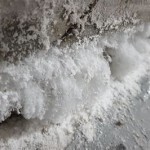Essential Aspects of Water Sealing Basement From Inside
A wet basement can be a major problem, causing damage to your belongings, your home's structure, and even your health. If you're dealing with a wet basement, it's important to take steps to seal it from the inside. Here are some of the essential aspects to consider:
1. Identify the Source of the Leak
The first step in sealing a basement from the inside is to identify the source of the leak. This can be a difficult task, as water can travel through cracks and gaps in your foundation and walls. Look for signs of water damage, such as mold, mildew, or efflorescence (a white, powdery substance that forms on walls and floors). You can also use a moisture meter to check for dampness in your basement.
2. Repair the Leak
Once you've identified the source of the leak, you need to repair it. This may involve patching cracks in your foundation or walls, sealing gaps around windows and doors, or installing a sump pump to remove water from your basement. The specific repair method will depend on the source of the leak.
3. Waterproof the Walls and Floor
Once the leak has been repaired, you need to waterproof the walls and floor of your basement. This will help to prevent water from seeping into your basement through the pores in the concrete or masonry. There are a variety of waterproofing products available, including sealants, coatings, and membranes. Choose a product that is specifically designed for use in basements and that is compatible with the materials in your basement.
4. Install a Perimeter Drain
A perimeter drain is a system of pipes that is installed around the perimeter of your basement. The drain collects water that seeps into your basement through the foundation walls and directs it to a sump pump. The sump pump then pumps the water out of your basement.
5. Ventilate Your Basement
Ventilation is important for preventing moisture from accumulating in your basement. Install a dehumidifier to remove excess moisture from the air. You can also open windows and doors to ventilate your basement, but be sure to close them when it rains or snows.
6. Maintain Your Waterproofing System
Once you've waterproofed your basement, it's important to maintain the system to ensure that it continues to work properly. Inspect your waterproofing system regularly for signs of damage or wear and tear. Repair any damage immediately and replace any worn-out components.
7. Monitor Your Basement for Moisture
Even after you've waterproofed your basement, it's important to monitor it for moisture. Check for signs of water damage, such as mold, mildew, or efflorescence. If you notice any signs of water damage, contact a professional immediately to have the problem fixed.
Water sealing a basement from the inside can be a complex and challenging task. However, by following these essential steps, you can help to keep your basement dry and prevent water damage.

The 3 Major Approaches To Basement Waterproofing News And Events For Systems Inc

Waterproofing A Basement From The Inside Can Be Challenge Fine Homebuilding

Interior Basement Waterproofing System In Milwaee Wi

Interior Basement Waterproofing Internal Solution Rcc Toronto Wet

How Does Interior Basement Waterproofing Work

How To Waterproof Basement Walls From Inside Sani Tred

How Does Interior Basement Waterproofing Work

Diy Basement Waterproofing Sealonce System Easy Installation Waterproof Com

Interior Basement Waterproofing Internal Solution Rcc Toronto Wet

Best Way To Waterproof Your Basement Dry Pro
See Also








